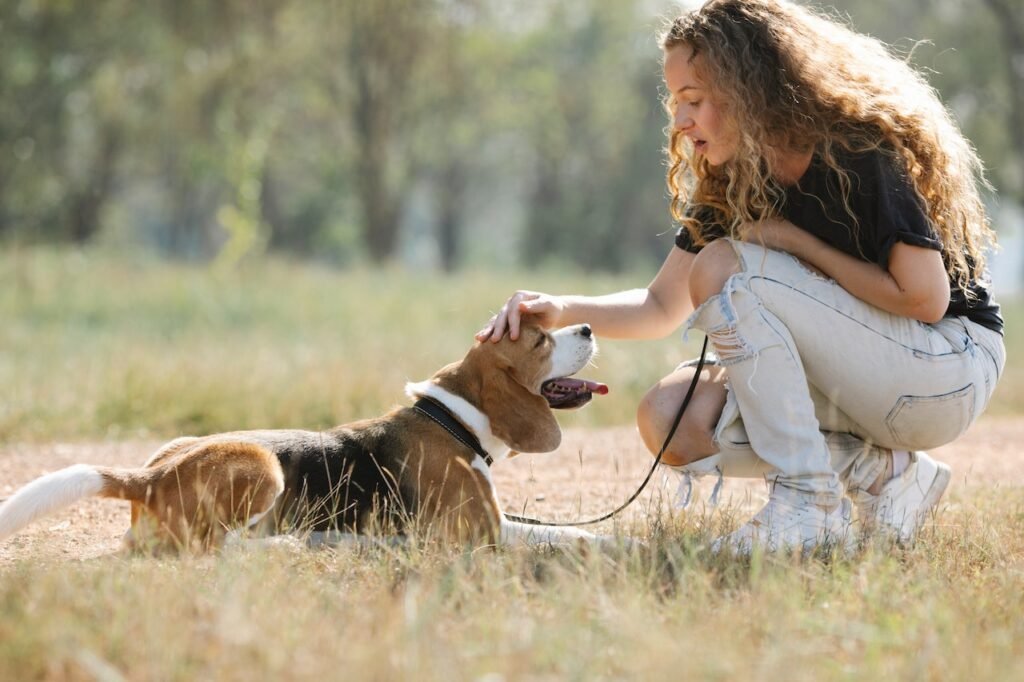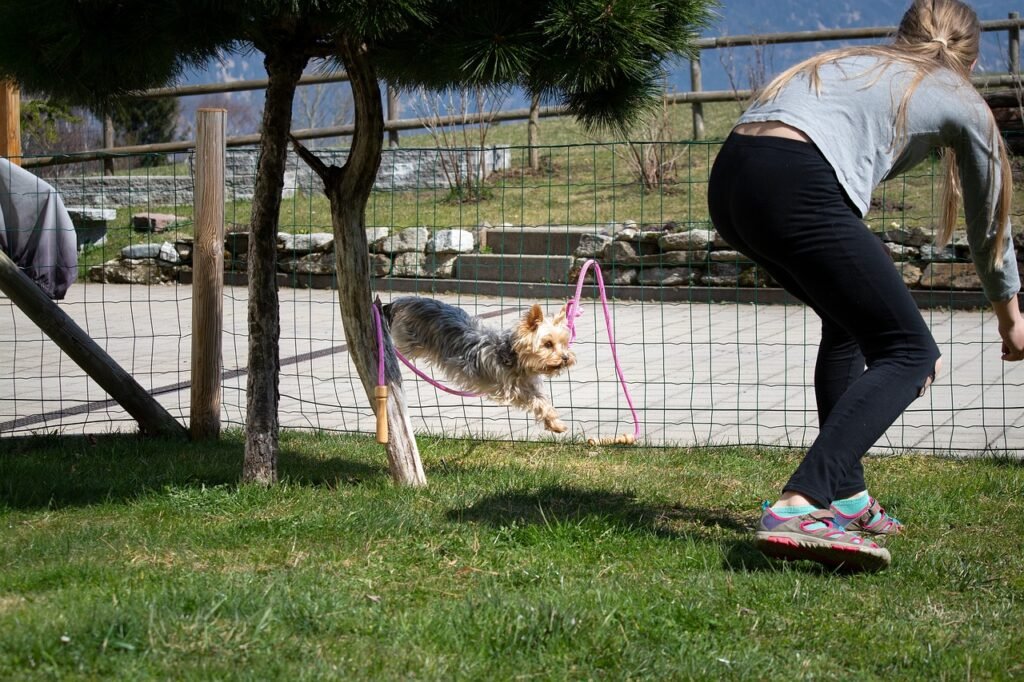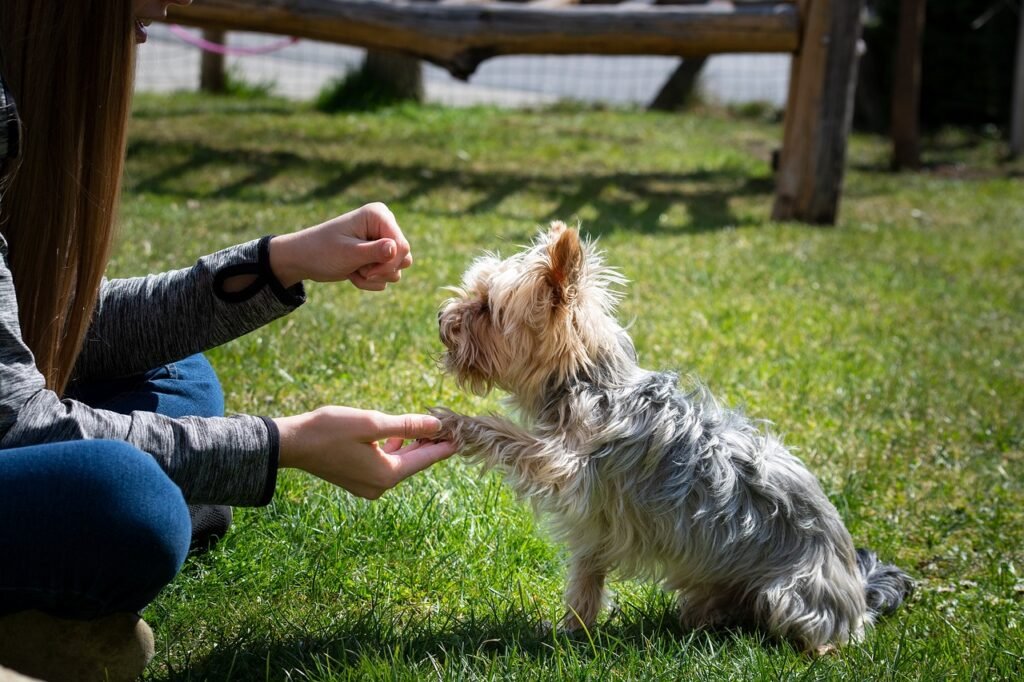Well, hello fellow dog devotees! Today, we embark on a journey through the bustling avenue of dog training. Picture this: A morning where your four-legged friend responds to your commands with utmost grace and elegance, making you swell with pride. Sounds delightful, doesn’t it? If you’re sitting there wondering, “How can I achieve this canine bliss?” you’re about to stumble upon your answer.
Let’s tread this golden path where you and your furry friend dance to the rhythmic tunes of harmonious commands, shall we?
Setting The Stage: Why Commands are the Linchpin
Before we leap into the magical world of dog commands, it’s crucial to understand why mastering them is akin to holding the golden key to a treasure chest of canine obedience and understanding.
A Symphony of Mutual Understanding
- Safety First: Ensuring your dog responds to basic commands can be a lifesaver in dangerous situations, acting as a protective shield.
- Building Bond: Commands are not just words but a language that helps to build a bond that is strong and nurturing.
Could it be that these commands are the unsung heroes in fostering a relationship grounded in trust and mutual respect?
Command Number One: “Sit” – The Foundation Stone
Ah, the classic “Sit” command! This is usually the first command taught and for good reason. It lays the very foundation of obedience training, setting the stage for a fruitful relationship between you and your pooch.
Techniques and Tips
- The Treat Trick: Hold a treat close to your dog’s nose and then move your hand up, allowing his head to follow the treat and causing his bottom to lower.
- Voice and Gesture Harmony: Accompany your verbal command with a consistent hand gesture to facilitate quicker learning.
Isn’t it fascinating how the “sit” command can pave the way for a tranquil and disciplined atmosphere at home?
Command Number Two: “Stay” – The Symbol of Patience
Next up, we have the quintessential “Stay” command. Teaching your dog to stay is akin to imparting the lesson of patience and self-control, virtues that are not just canine-centric but universally admired.
The Art of “Stay”
- Step-by-Step Progression: Start with short durations of “stay” and gradually increase the time span as your dog gets the hang of it.
- Distance Matters: Gradually increase the distance between you and your dog while practicing this command, reinforcing their ability to stay put even from afar.
Could the “stay” command be the beacon of cultivating a mature and understanding canine companion?
Command Number Three: “Down” – The Calming Influence
Moving forward, the “down” command steps into the spotlight. This command, often seen as a step-up from the “sit” command, requires a bit more patience and skill, but it’s well worth the effort for the tranquility it can instill in your furry friend.
Unlocking the “Down” Command
- Lure with a Treat: Use a nice, smelly treat to lure your dog into a down position, guiding it from their nose down to the floor.
- Consistency is Key: Just like with the “sit” command, combining a specific hand gesture with the verbal cue can work wonders.
Could mastering the “down” command be the secret to a peaceful and harmonious home environment?
Command Number Four: “Come” – The Safety Net
Ever found your heart racing when your dog slips out of the leash and dashes across the park? The “come” command acts as a safety net, ensuring your dog returns to you when called, potentially averting dangers.
Cultivating the “Come” Command
- Leash Training: Initially practice this command with a leash, so you can gently reel them in if they get distracted.
- Rewarding Compliance: Always reward your dog when they come to you, creating a positive association with the command.
Could this command be the golden ticket to enjoying stress-free outings with your faithful companion?
Command Number Five: “Heel” – The Walk of Harmony
The “heel” command is like choreographing a dance where you and your dog move in perfect harmony during walks, transforming a chaotic walk into a blissful stroll.
The Grace of “Heel”
- Positioning: Teach your dog to walk at your side, not pulling ahead or lagging behind.
- Short Leash Training: Using a short leash during training can help in maintaining the desired position.
Isn’t the “heel” command akin to orchestrating a harmonious ballet on the bustling streets?
Command Number Six: “Leave It” – The Shield Against Dangers
The “leave it” command acts as a shield, protecting your inquisitive canine from potential dangers lurking in the form of tempting but harmful objects or foods.
Building the “Leave It” Barrier
- Treat Swap: Use a treat to distract your dog from the object you want them to avoid, rewarding them when they focus on you instead.
- Gradual Progression: Start with less tempting objects and gradually move to more enticing items, reinforcing their self-control.
Could this command be the unsung hero in safeguarding your canine from the hidden dangers in their explorative journeys?
Command Number Seven: “Off” – The Gentle Reminder
Lastly, the “off” command serves as a gentle reminder to our overly enthusiastic furry friends to maintain boundaries, fostering a respectful and understanding relationship.
Instilling the “Off” Virtue
- Immediate Reward: Reward your dog immediately when they comply, reinforcing the desired behavior.
- Voice Modulation: Use a firm, but not harsh, voice to convey the command, establishing authority without intimidation.
Isn’t it incredible how this simple command can infuse a dose of respect and understanding into your canine relationship?
Conclusion: Commanding a Harmonious Relationship
In conclusion, these seven basic commands form the tapestry of a fruitful and harmonious relationship with your dog. Just like learning a new language, mastering these commands opens up channels of understanding, fostering a bond that’s built on mutual respect and love.
Key Takeaway
Mastering these commands is not just a training regimen but a gateway to a beautiful, understanding, and fulfilling relationship with your dog. As you step into this world of canine communication, remember, patience is your best friend. So, are you ready to embrace the world of harmonious dog training, nurturing a relationship that’s both respectful and loving?



